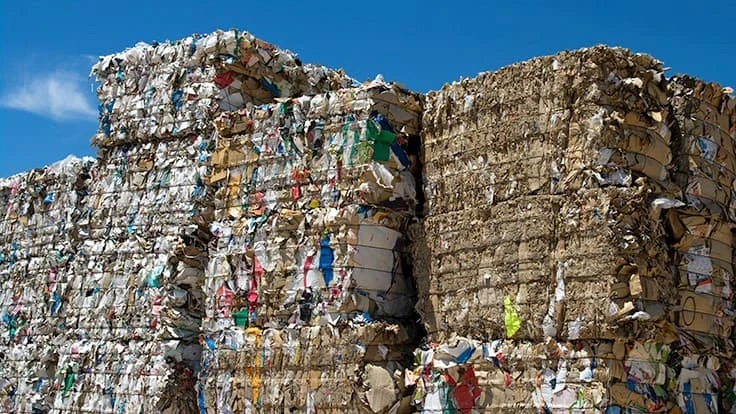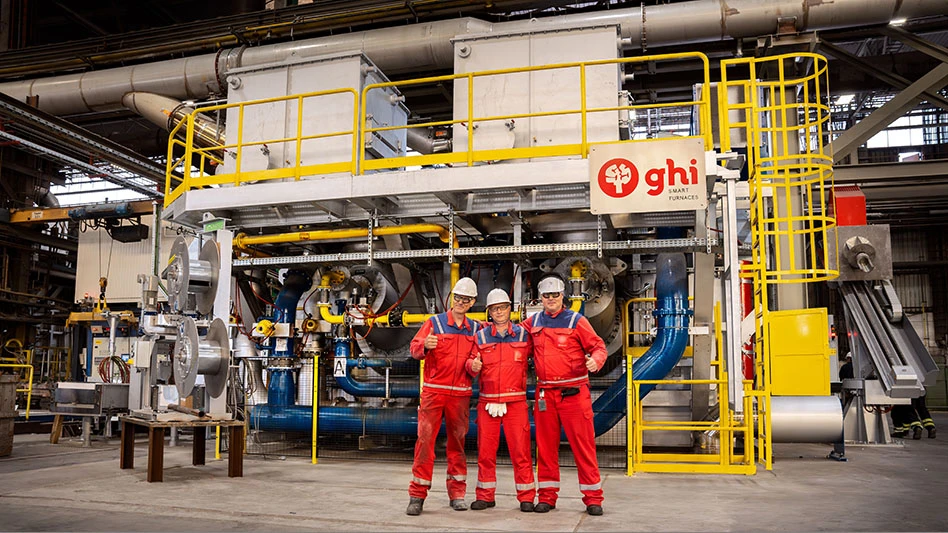
© Huguette Roe - dreamstime.com
Demand and pricing for most recovered fiber grades are continuing to trend upward as of the February buying period. Although domestic mixed paper prices remained mostly stagnant from the January buying period, most other recovered paper grades saw pricing rise.
Recyclers say domestic and export demand for old corrugated containers (OCC) is healthy. One recycler based in the Southeast adds that OCC markets have been strong and improving for nearly a year.
“We had a blockbuster year,” she says of 2020. “In fact, 2020 was our best performing year ever on the books. We started managing our margin closely, becoming smarter on how to buy and sell. Everything came into a nice tidy bow at the end of the year.
She continues, “To start this year, you’ve got demand for OCC, and it feels like more demand because there’s less supply of it.”
In late January and into February, paper mills reported strong containerboard demand in their latest earnings reports and calls, saying they expect that to be the case into the next quarter, which is good news for OCC demand.
“Demand in our Packaging segment remained very strong as sales volumes in both our containerboard mills and our corrugated products plants set all-time records,” says Mark Kowlzan, chairman and CEO of Lake Forest, Illinois-based Packaging Corp. of America (PCA) in the company’s fourth-quarter 2020 earnings report that came out the last week of January. “Even though we postponed a large discretionary outage during the quarter, as well as utilized our Jackson, Alabama, mill for additional containerboard production, we again ended the period with inventory levels lower than planned.”
Looking to the first quarter of 2021, Kowlzan says he expects PCA’s Packaging segment demand to remain strong, with shipments exceeding those of 2020’s record first quarter.
“This will require us to continue producing containerboard at our Jackson mill in addition to an appropriate amount of white paper to maintain optimal inventory levels for servicing our paper customers,” he says. “We expect to realize the majority of our recently announced Packaging segment price increases during the first quarter, and we expect average export prices to move higher as well.”
Sonoco, Hartsville, South Carolina, also announced that it would implement a $50 per ton price increase for all grades of uncoated recycled paperboard in the U.S. and Canada, effective with shipments beginning March 1. The company says a continuation of order backlogs at its mills along with continuing inflation of input costs—particularly freight—are driving the price increase.
While export demand for recovered paper is good, securing containers and sailings is challenging. The recycler based in the Southeast says many recyclers and brokers still are “scrambling for container space” as of mid-February.
She adds that recyclers and brokers must be “nimble” and “have a very fluid planning ability” in light of the logistics issues associated with domestic and export shipments.
Amid this tight supply environment, a number of domestic paper mills are adding capacity to consume OCC this year. Sometime in the first half of the year, Green Bay Packaging is expected to add about 685,000 tons of annual containerboard capacity at its mill in Green Bay, Wisconsin. And between now and 2023, many other mills have announced capacity expansions, such as Nine Dragons, Cascades, Sonoco and Domtar.
In the near term, the need for containerboard and boxes is strong. Leonard Zeid, who is a St. Louis-based broker for Midland Davis, says he suspects global box demand could only get stronger in a postpandemic world.
“Our economy should grow at some rate,” he says. “Look at where we are right now—that’s without a service economy to speak of. There are no concerts [and] no stadium events receiving a lot of material in boxes. But you’ll soon add those boxes back into the equation. The outlook immediately looks good.”
Recyclers and mill operators say they also expect to see a similar spike in pricing and demand for tissue grades as the away-from-home market rebounds when pandemic-related restrictions lift globally and people start eating out, traveling and attending events in greater numbers.
“There is limited generation currently, so, as consumer demands increase due to reopenings, pricing for recovered paper should go up,” says Kari Talvola, president of Oakland, California-based Shred Works, a document destruction company.
Yet with many offices being closed or only partially opened since March 2020, some mill operators are concerned tissue grades such as sorted office paper (SOP) and coated book stock (CBS) will be in short supply to fill away-from-home market needs. As of mid-January, a national mill operator says mills “are concerned” about the future supply of office paper to serve away-from-home markets.
As a result, he says, some mills are turning to virgin pulp, pulp substitutes and deinking grades to meet their needs. For more on market conditions for tissue grades, read the upcoming March issue of Recycling Today next month.
Latest from Recycling Today
- ReElement, Posco partner to develop rare earth, magnet supply chain
- Comau to take part in EU’s Reinforce project
- Sustainable packaging: How do we get there?
- ReMA accepts Lifetime Achievement nominations
- ExxonMobil will add to chemical recycling capacity
- ESAB unveils new cutting torch models
- Celsa UK assets sold to Czech investment fund
- EPA releases ‘National Strategy to Prevent Plastic Pollution’





